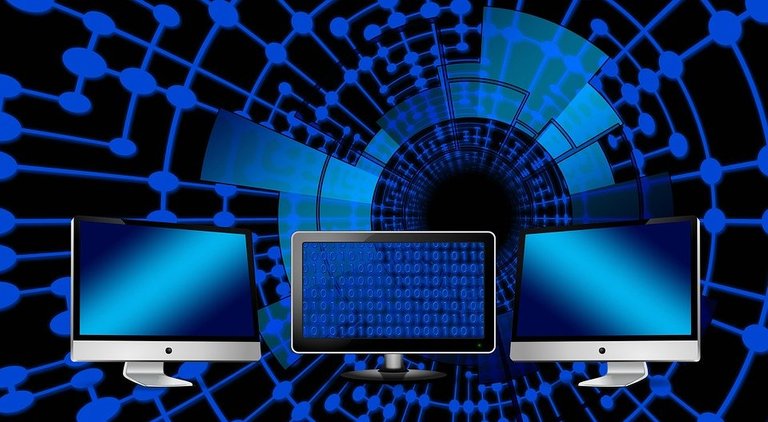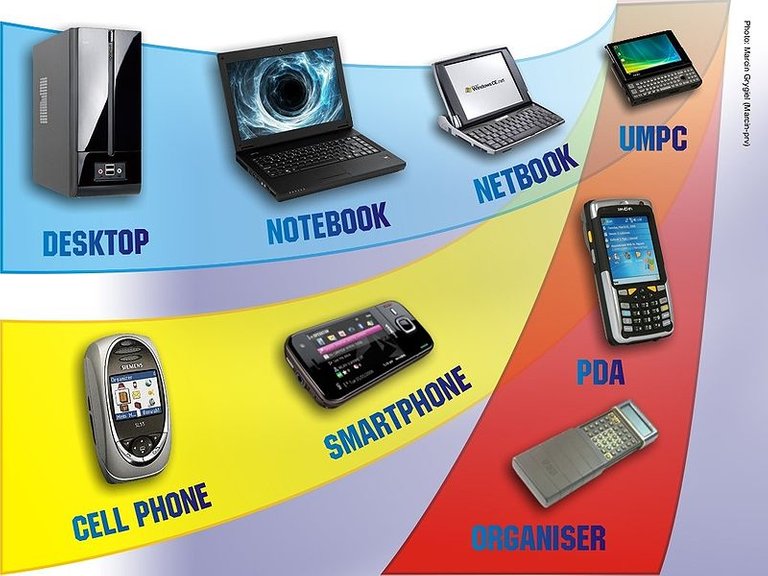The computers we have seen in recent years are completely different from what we used to have. Technology has a reputation for constant evolution and advancements. Every technological innovation has only gotten better with each passing decade and computers are no exception. The extremely modernized computers we see today are successors of past voluminous devices that required the efforts of a group of people to either handle or move from place to place. Evolution has brought the change we see today. Computers can now fit perfectly into our backpacks or occupy a relatively small space in our homes and offices. Technology has even brought an exceptional modification and we can see that in nanocomputers that could be commonplace over a couple of years.
Dating back to many decades, computers are technological innovations that have been serving the mankind for various purposes in the diverse industrial sectors. A sequential breakdown of the evolution of computers gives five apparent generations of technological devices. Every generation brought its modification and technological developments that defined them. Each generation changes the way computers operate. As technological advancements progressed, computers developed into more compressed, portable, inexpensive, devices that become more efficient and dynamic machines. From complex and ambiguous almost immovable machines to lightweight, carriable and faster devices, the past decades have experienced significant growth and notable improvement of computers.

In this article, we will be looking at how far advancement in technology has brought computers. The evolution, starting from the generation of vacuum tubes:
First Generation – The early days of Vacuum Tubes
I know it sounds a little puzzling. How did engineers pull it off? Vacuum tubes were necessary for ancient computers to function. These vacuum tubes function as circuitry and magnetic drums for recollection. These computers were the first generation of computers and they lasted through the years 1940 – 1956. They were voluminous and considerably huge. They could take up an entire room leaving no space for anyone else but the operators and they cost significant resources to run. While these computers were huge, they were ineffective. They emitted so much heat that made it so difficult for anyone to work around it conveniently. This first generation of computers also consumed so much electricity and because of its abundance of heat, it was vulnerable to constant breakdowns that could occur in the middle of an important task.
One characteristic of these first-generation vacuum computers is their complete reliance on machine language – the basic programming language that can be interpreted by the computer. The first generation computers could only solve one problem at a time compared to the multitasking abilities of today's computers. The input was built on punched cards and paper tape while output appeared on print-outs.
Second Generation – The Era Of Transistors
Vacuum tubes were flipped over by transistors in 1956 which birthed the second generation of computing. Although transistors had been around for a decade, they only became a part of computers in the 1950s. The era of transistors posed a better alternative and was ultra-superior to the generation of vacuum tubes. Although they relied on punched cards to predicate inputs and printouts, they made computers a lot smaller than those of the previous generation, less expensive, and less consumption of electricity.
The language sprung up from uncommon binary language to symbolic languages. Computer programmers could research and discover instructions in word. High-caliber programming languages were also being developed at that time. I'm talking about the first versions of COBOL and FORTRAN. Computers powered by transistors were the first in computer history to store instructions into their recollections, moving from a magnetic drum to a magnetic core kind of technology.
Third Generation – The Birth Of Integrated Circuits
Technological advancements will not cease as long as there is a chance for improvements. Just as the transistors were superior to vacuum times, the integrated circuit brought a change of its own. Transistors in the integrated circuits era became miniaturized components and were put on silicon chips. This advancement resulted in faster and highly effective computers. This generation ushered in the first computers that allowed users to interact using keyboards and monitors that interfaced with an operating system. We can say this is a notable development that changes the old ways of punch cards and printouts.
Unlike the previous generations of computers, these third-generation computers were able to run many applications at a time using a central program that worked to monitor memory.
Fourth Generation – The Dawn Of Innovative Microprocessors
The majority of computer users must be familiar with the word 'Intel'. This is where the innovation of microprocessors began. The intel chip had all the components of a computer including the central processing unit, reflection, as well as input and output controls in a single chip. It contained thousands of unified circuits.
Microprocessors began the era of small computers. What would occupy a whole room in the first generation becomes handy with the innovative microprocessors. The efficacy and power of these computers explain why they could be linked to establishing networks. The evolution of the internet owes every credit to these small computers. Some basic advances also followed the trend of the era including the graphical user interface, the computer mouse, and the recent novel advancements in laptop pocket devices.
Fifth Generation – The Revolutionary Artificial Intelligence
The fifth generation of computers is linked to artificial intelligence in a way. Although artificial intelligence is not yet widely used in some parts of the globe, it promises a future of potential for computers. It is an emerging and cutting-edge technology that is gradually being implemented in certain computing systems. The likes of assistive devices and voice recognition are some applications of the fifth-generation computing technology.
AI is rapidly becoming a reality made possible by parallel processing superconductors. The essence of the fifth generation of computers will be employing emerging technologies to give rise to ultra-modern machines that can organize themselves with little or no human intervention.

The Future Of Computers
Verging to the future, computers will be extremely pervaded by the most innovative technologies. We tend to expect a heightened revolution by molecular and nanotechnology including quantum computation. With engineers constantly on the quest for more novel technologies to keep up with advancements, the world of computers is yet to see the best of innovations that will reshape what we already have.
Resources
https://www.livescience.com/20718-computer-history.html
https://www.interaction-design.org/literature/book/the-social-design-of-technical-systems-building-technologies-for-communities/the-evolution-of-computing
https://www.computerhope.com/issues/ch001921.htm
https://www.scienceabc.com/innovation/how-did-computers-go-from-the-size-of-a-room-to-the-size-of-a-fingernail.html
Congratulations @ummar! You have completed the following achievement on the Hive blockchain and have been rewarded with new badge(s) :
Your next target is to reach 3000 upvotes.
Your next payout target is 3000 HP.
The unit is Hive Power equivalent because your rewards can be split into HP and HBD
You can view your badges on your board and compare yourself to others in the Ranking
If you no longer want to receive notifications, reply to this comment with the word
STOPCheck out the last post from @hivebuzz:
Support the HiveBuzz project. Vote for our proposal!
Thanks for your contribution to the STEMsocial community. Feel free to join us on discord to get to know the rest of us!
Please consider supporting our funding proposal, approving our witness (@stem.witness) or delegating to the @stemsocial account (for some ROI).
Please consider using the STEMsocial app app and including @stemsocial as a beneficiary to get a stronger support.